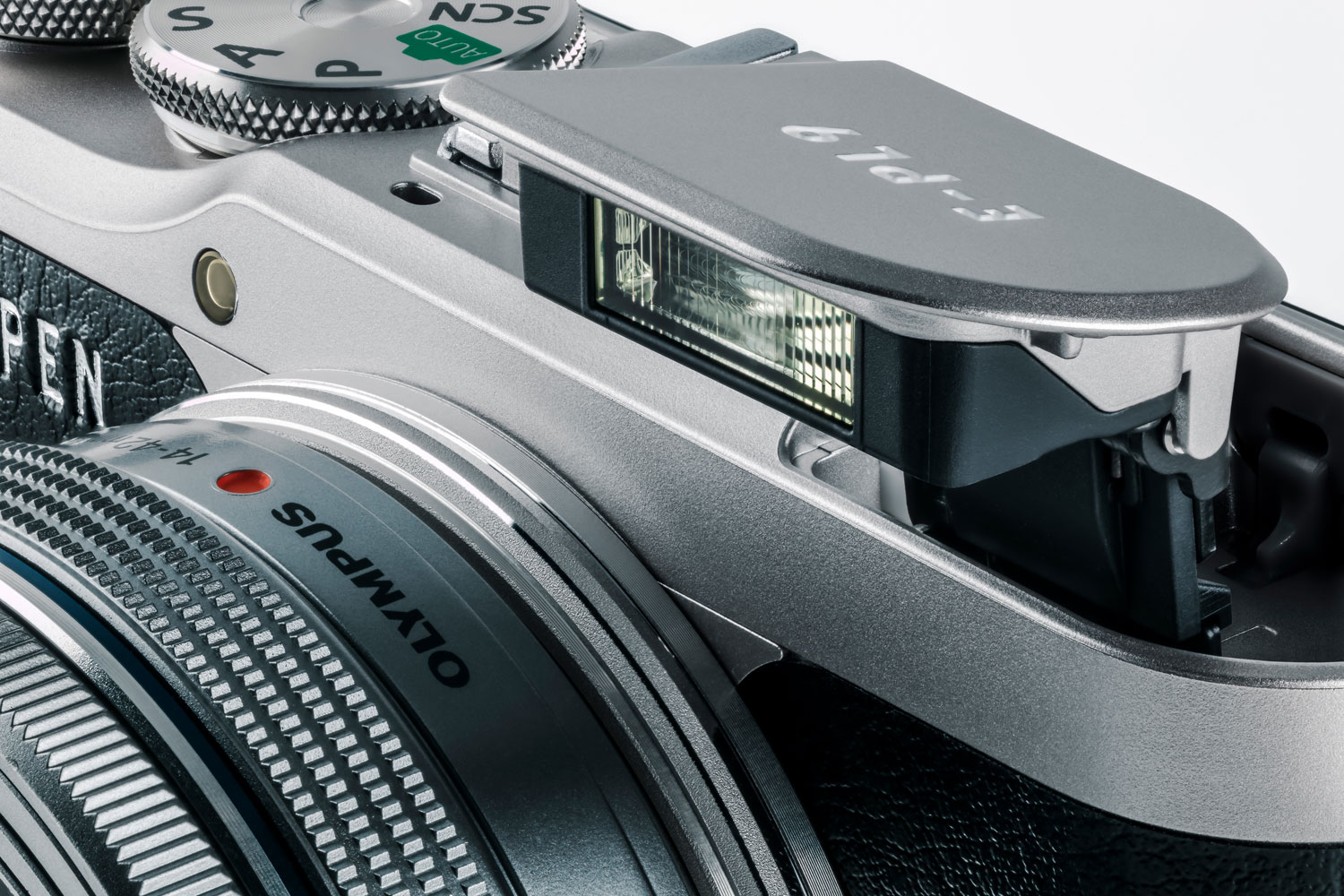Olympus is bringing the budget PEN mirrorless camera up to 2018 standards with new 4K capabilities and built-in Bluetooth. On Thursday, April 5, Olympus announced availability of the new PEN E-PL9 in North America. The camera officially launched last month, but only in overseas markets.
The Olympus PEN E-PL9 wraps up much of the same imaging hardware as the predecessor, the E-PL8. The camera uses the same 16-megapixel Micro Four Thirds sensor, a nearly identical 8.6-frames-per-second burst mode, and the same three-axis sensor-shift image stabilization system. The autofocus, however, sees a jump to a 121-point contrast detection system, up from 81 points. A pop-up flash is also included, while the earlier PL8 used an external flash only.
The PL9 isn’t entirely identical on the inside though, with a move up to a TruePic VIII processor that allows this mirrorless camera to handle 4K video at 30 frames per second. When that higher resolution isn’t necessary, the E-PL9 can shoot Full HD 1080p at up to 60 fps, great for either capturing detail in fast-moving subjects or for slow-motion playback.
Olympus is also adding new art filter modes with a new option designed to mimic instant film, bringing the number of in-camera options to 16.
Like the previous version, a flip-out touchscreen is designed for selfies, including touch controls that automatically switch on when the screen is flipped to face forward. The addition of Bluetooth adds convenience and improves efficiency for remote operation, with its lower power requirements allowing the camera to go into standby while remaining connected to a wireless device. Wi-Fi is still available for transferring larger, high-resolution files.

The Olympus E-PL9 will be available in white, brown, and black faux leather wrapping with an enhanced grip. A special edition blue model (above) will also be available in limited quantities starting in late May. The camera body weighs about 13.4 ounces including the 350-shot battery, which, as Olympus points out, is less than a bottle of water — even if the 14-42mm F3.5-5.6 EZ kit lens is included.
The Olympus PEN E-PL9 will retail for about $600 body-only, or $700 when bundled with the M.Zukio 14-42mm F/3.5-5.6 lens, a custom bag and strap and a 16GB memory card.
Updated on April 5 to include U.S. availability and pricing.












